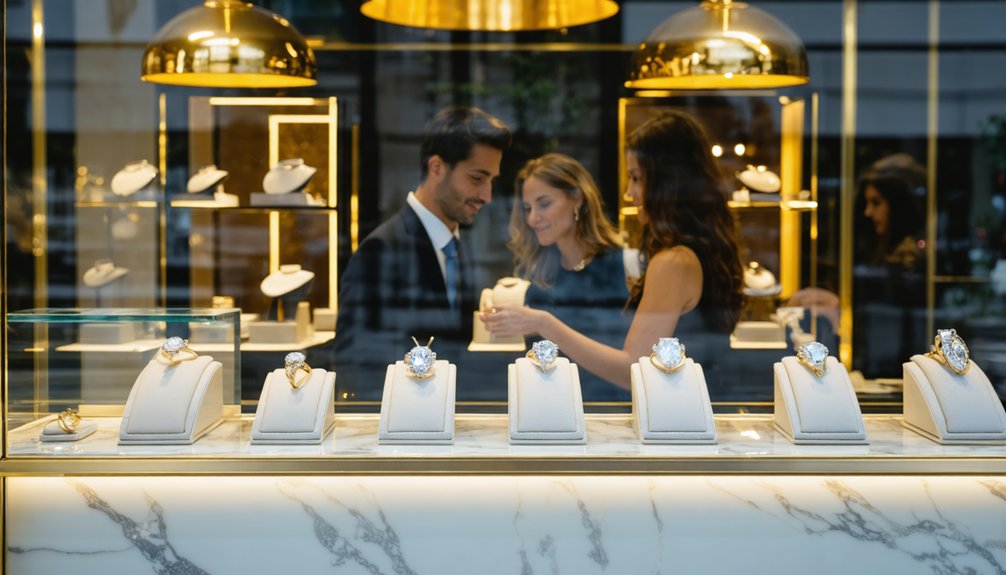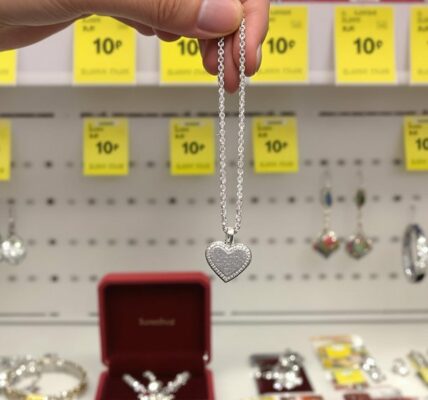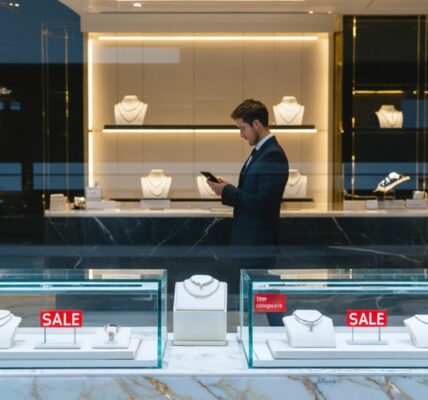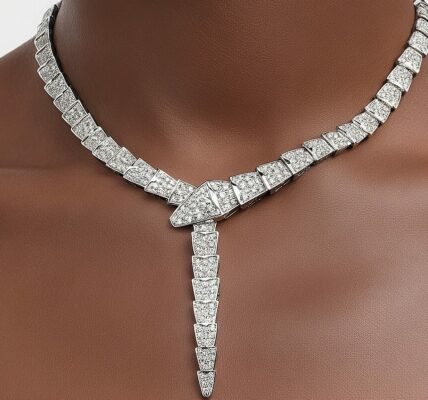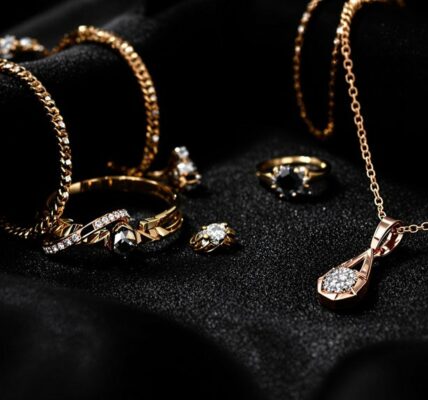The U.S. retail jewelry market shows robust optimism for 2025, supported by impressive growth projections and strong industry confidence. The market, currently valued at $73.32 billion, is expected to reach $96.61 billion by 2030, with a steady 4.1% CAGR. Digital sales are surging, representing 16.7% of total revenue, as lab-grown diamonds gain popularity owing to sustainability concerns and cost advantages. Business leaders are particularly confident, with 74% anticipating revenue increases and 65% projecting higher profits. With declining interest rates and stable economic indicators, the jewelry industry's sparkling future offers many opportunities for growth and innovation.
Article Contents
- 1 Main Highlights
- 2 Market Growth and Industry Size
- 3 Current Jewelry Market Trends
- 4 Distribution Channel Performance
- 5 Business Confidence Indicators
- 6 Product Category Success Rates
- 7 Competitive Landscape Analysis
- 8 Major Industry Challenges
- 9 Holiday Season Sales Impact
- 10 Customer Behavior Shifts
- 11 Our Final Thoughts
Main Highlights
- 88% of jewelry professionals express optimism about industry future, driven by rising demand for sustainable, high-quality jewelry.
- Digital sales platforms are expanding rapidly, projected to represent 16.7% of total jewelry revenue by 2025.
- Economic indicators show projected GDP growth of 2.5% and declining interest rates, supporting business investment through 2025.
- 74% of business leaders anticipate revenue increases, while 65% expect higher profits in the coming year.
- Lab-grown diamonds market expected to double to $3.9 billion by 2025, representing nearly 50% of diamond jewelry sales.
Market Growth and Industry Size
As the global jewelry market continues to expand significantly, the U.S. jewelry market demonstrates particularly robust growth potential, with its current value of USD 73.32 billion in 2023 expected to reach USD 96.61 billion by 2030. The projected compound annual growth rate (CAGR) of 4.1% reflects strong market dynamics and evolving consumer preferences in the domestic market. The rise in luxury and personalized jewelry demand has become a key driver of market expansion. Amid economic pressures, consumers are showing a trend toward value-conscious shopping while still maintaining jewelry purchases. The market shows particular strength during the holiday season, with December sales driving significant revenue.
Within this flourishing environment, certain segments are showing exceptional performance. Rings continue to dominate the market, accounting for nearly 43% of revenue share in 2023, as earrings are maintaining steady growth at a 4.2% CAGR.
Traditional retail channels remain the backbone of jewelry sales, commanding 84% of distribution, though online sales are gaining momentum as shopping habits evolve.
The industry's positive path is further supported by a wider global market valued at USD 353.26 billion in 2023. This broader context, combined with increasing disposable income and creative design offerings, suggests a healthy outlook for U.S. jewelry retailers.
Industry professionals share this optimism, with 88% expressing confidence in the current state and near-term future of the jewelry business.
Current Jewelry Market Trends
The U.S. retail jewelry market is experiencing significant shifts in 2025, with digital sales platforms becoming increasingly dominant in the industry.
Lab-grown diamonds are gaining remarkable market share as consumers embrace more sustainable and cost-effective substitutes to natural diamonds. Gen Z consumers are driving this sustainability trend, with 55% expressing concerns about climate change.
Major luxury brands are broadening their presence in the U.S. market through both online channels and brick-and-mortar locations, offering wider selections of high-end jewelry pieces. The latest collections showcase stacked bangles and bracelets as a key trend on designer runways. The increasing per capita disposable income is fueling consumer spending on luxury jewelry items across urban areas.
Digital Sales Surge
Digital jewelry sales have altered the traditional retail environment, with online purchases now representing 16.7% of total industry revenue and generating nearly $60 billion in sales. This surge in digital marketing has transformed consumer engagement, particularly among younger generations who prefer the ease of online shopping. With a 7.6% CAGR revenue over the past five years, the industry has demonstrated strong digital resilience and adaptation. Effective partnerships with micro-influencers have proven instrumental in building authentic connections and driving consumer trust.
| Digital Sales Drivers | Current Impact | 2025 Projection |
|---|---|---|
| AR Technology | Virtual Try-On | Mainstream Adoption |
| Social Commerce | Direct Buying | 39.6% of Sales |
| Mobile Shopping | Growing Swiftly | Primary Channel |
The jewelry industry's digital transformation extends beyond traditional e-commerce platforms. Augmented reality technologies now enable customers to virtually try on pieces before purchase, as well as social media integration facilitates seamless shopping experiences directly through popular platforms. The rise of direct-to-consumer models has given jewelry brands unprecedented control over their pricing and customer relationships. This technological evolution aligns with changing consumer preferences, particularly among Gen Z shoppers who demonstrate strong interest in luxury brands and digital shopping experiences. As the U.S. jewelry market continues its projected growth at a 4.1% CAGR through 2030, digital platforms will play an increasingly significant role in driving sales and shaping consumer behavior.
Lab-Grown Diamond Adoption
Market disruption from lab-grown diamonds continues reshaping the U.S. jewelry retail environment, with projections indicating a doubling of market size to $3.9 billion by 2025.
This surge reflects growing consumer awareness of lab grown benefits, including their 30-40% lower price point and minimal environmental impact compared to mined diamonds. Major companies like Pandora and Swarovski are targeting the fashion jewelry segment.
Retailers are responding to this shift by broadening their lab-grown collections and investing in consumer education initiatives. Nearly 50% of all diamond jewelry sold in 2024 consisted of lab-grown stones. The market is expected to reach $74.45 billion by 2032.
The younger generation, particularly Millennials and Gen Z, demonstrates strong interest in these substitutes, driven by ethical sourcing concerns and sustainability preferences.
With lab-grown diamonds requiring only 7 gallons of water per carat versus 126 gallons for mined diamonds, the environmental advantages are clear.
The increasing adoption of lab-grown diamonds by luxury brands has helped legitimize this market segment, as technological improvements continue to improve production efficiency.
As prices have decreased substantially since 2018, offering up to 80% savings compared to natural diamonds, retailers are finding these stones particularly attractive to value-conscious customers who want high-quality jewelry without compromising their principles or budgets.
Luxury Brand Expansion
Luxury jewelry brands are poised for significant growth through 2025, with the U.S. gemstones and jewelry market projected to reach $26 billion, increasing at a 3.6% CAGR. Leading brands like Tiffany & Co., Cartier, and Van Cleef & Arpels are strengthening their positions through brand storytelling that highlights heritage and craftsmanship, appealing to consumers pursuing meaningful purchases. These prestigious houses have demonstrated enduring value, with pieces like the Sunrise Ruby from Cartier selling for over $30 million. Modern consumers seek mindful marketing approaches that cut through information overload to deliver authentic value. The APAC region accounts for 59% of the global jewelry market share, demonstrating significant influence on industry trends.
The industry's growth is driven by three key factors:
- Rising consumer demand for high-quality, sustainable pieces that contrast with disposable fashion
- Strategic luxury collaborations with in-house influencers to create authentic brand personalities
- Broadening retail presence across multiple channels and regions to increase market penetration
This growth comes at a time when 88% of jewelry professionals express optimism about the industry's future. Brands are adapting to changing consumer preferences by focusing on the longevity and heirloom quality of their pieces, all the while leveraging AI for marketing innovations.
The specialist retail segment is expected to show substantial growth, even with challenges in managing global supply chains and logistics. This positive outlook is further supported by the projected global market growth of $107.9 billion from 2024 to 2028.
Distribution Channel Performance

Several significant trends are reshaping the U.S. jewelry retail scenery, with offline channels maintaining a commanding 84% market share in 2023 as online platforms experience swift growth.
Traditional brick-and-mortar stores continue to dominate the market, leveraging their ability to provide immersive shopping experiences and immediate product interaction that many customers still prefer. The economic recovery post-pandemic has further strengthened the position of physical retail locations. Leading retailers like Sophie Bille Brahe are finding success with traveling showrooms that bring products directly to customers.
The online evolution of jewelry retail, nonetheless, is gaining momentum, particularly among younger generations. E-commerce platforms are revolutionizing the industry through digital innovation, offering faster delivery times and broadening product accessibility. Modern retailers are achieving impressive profit margins up to 300% through strategic sourcing and pricing strategies.
This shift is evidenced by projections showing online sales growing from 16% in 2023 to an anticipated 39.6% by 2028.
Retailers are adapting to this dual-channel reality by implementing hybrid approaches, such as traveling showrooms that combine physical presence with digital capabilities.
This strategy particularly resonates with Gen Z consumers, who are increasingly comfortable with digital jewelry shopping experiences.
With the U.S. jewelry market valued at $73.32 billion in 2023 and growing at a 4.1% CAGR, both traditional and digital channels are positioned for continued expansion through 2025.
Business Confidence Indicators
Recent surveys reveal strong business confidence in the U.S. retail jewelry sector, with 88% of professionals expressing optimism about current conditions and future prospects.
Market expansion indicators suggest sustained growth, particularly in e-commerce channels where 55% of jewelers report increased business activity. The sector has made an impressive recovery since hitting a record low of $558 million in retail sales during April 2020.
The positive investment climate is further reinforced by projected market growth to $26 billion by 2025, alongside moderating inflation rates and healthy employment figures that support consumer spending. Independent jewelers are strategically focusing on value-driven experiences to maintain competitive advantage in the evolving market. Economists predict a benign operating environment with steady retail growth of 3.5% year-over-year in 2025.
Growth Expectations Rise Steadily
Throughout 2025, the U.S. retail jewelry sector demonstrates robust confidence indicators, with 88% of industry professionals expressing optimism about market conditions. This positive outlook aligns with evolving consumer preferences and emerging sustainability trends, as businesses adapt to meet changing market demands.
The jewelry industry's growth path is supported by several key metrics:
- 74% of business leaders anticipate revenue increases
- 65% project higher profits for the upcoming year
- 51% plan to expand their workforce
These statistics reflect a sector poised for expansion, backed by favorable economic conditions including projected GDP growth of 2.5% and declining interest rates.
The anticipated decrease in the federal funds rate to 2.75% by year-end 2025 creates a more favorable environment for business investment and consumer spending.
The market's strength is further reinforced by steady retail sales growth projections of 3.5% for 2025, as the expected inflation rate of 2.2% approaches the Federal Reserve's target.
This balanced economic environment, coupled with strong consumer confidence levels, provides a solid foundation for sustained industry growth.
Market Expansion Drives Confidence
Business confidence in the U.S. retail jewelry sector continues to surge, bolstered by impressive market expansion indicators and strong growth projections. With the market size reaching $73.32 billion in 2023 and expected to grow at a steady 4.1% CAGR through 2030, retailers are implementing refined market segmentation strategies to capitalize on diverse consumer preferences. Small business owners are particularly encouraged by anticipated tax relief and deregulation benefits moving into 2025.
The industry's optimism is further strengthened by projected retail sales growth of 3.5% in 2025, surpassing 2024's 3.1% forecast. Retailers are adapting their consumer engagement techniques to meet evolving shopping behaviors, particularly in response to the significant shift toward online purchasing.
Although traditional offline channels still dominate with an 84% market share, businesses are strategically balancing their brick-and-mortar presence with digital expansion.
Economic indicators likewise support this positive outlook, with unemployment expected to stabilize at 4.2% by the end of 2025. Combined with moderating inflation and lower interest rates, these factors create favorable conditions for both established retailers and small business owners.
The industry's projected growth to $26 billion by 2025 reflects this robust market environment, encouraging continued investment in both traditional and digital retail channels.
Investment Climate Shows Promise
Consistently strong economic indicators and retailer sentiment paint an encouraging picture for jewelry industry investments in 2025.
With the federal funds rate expected to settle at 2.75% and inflation stabilizing near the Fed's target, economic resilience is creating a favorable environment for business growth and expansion. Retail investors maintain bullish sentiment heading into the new year, further strengthening market outlook.
Key factors supporting investment opportunities in the jewelry sector include:
- Projected market growth to $26 billion by year-end, with a steady CAGR of 3.6%
- Strong retailer confidence, with 88% of professionals expressing optimism about the industry
- Anticipated retail sales growth of 3.5%, outpacing the previous year's performance
The jewelry industry's digital transformation presents compelling investment opportunities, particularly in technology and online presence development. The rise of social media shopping has revolutionized how consumers discover and purchase jewelry products.
With unemployment expected to remain stable at 4.2% and consumer confidence trending upward, retailers who invest in digital capabilities and personalization technologies are well-positioned for success.
This positive outlook is further reinforced by the global jewelry market's expected expansion to $480.5 billion, creating various opportunities for businesses ready to adapt to evolving consumer preferences and market demands.
Product Category Success Rates
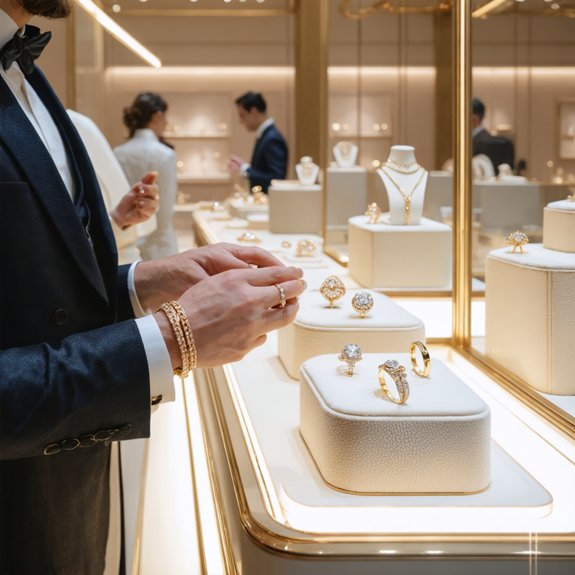
Several distinct product categories within the U.S. retail jewelry market demonstrate varying levels of success, with diamond jewelry capturing 62.86% of market revenue in 2023. Product innovation and consumer preferences continue to shape the market, with rings maintaining a dominant position at 43% market share, driven largely by wedding bands and corporate fashion demands. Retailers are increasingly leveraging data analytics tools to better understand and predict customer jewelry preferences.
| Category | Market Share | Growth Outlook |
|---|---|---|
| Rings | 43% | Steady Growth |
| Diamond Jewelry | 62.86% | Strong Growth |
| Earrings | 15% | 4.2% CAGR |
| Men's Jewelry | 12% | 5% CAGR |
| Personalized Items | 8% | Rising Demand |
The success rates across categories reflect evolving consumer behavior, particularly in online shopping patterns. Earrings show promising growth potential with a projected 4.2% CAGR through 2030, appealing to consumers pursuing simplistic designs. Men's jewelry represents an emerging opportunity, expected to grow at a 5% CAGR, as personalized jewelry items continue gaining traction. The layering trend anticipated in 2025 is likely to boost sales across multiple categories, as consumers combine different pieces to create unique looks.
Competitive Landscape Analysis
The U.S. retail jewelry market exhibits a dynamic competitive environment shaped by established luxury brands and emerging digital-first companies. Major players like Tiffany & Co, Signet Jewelers, and Cartier employ competitive strategies focused on brand prestige and unique customer experiences, whereas newer companies like Brilliant Earth and Vrai & Oro target digitally-savvy consumers with inventive approaches.
Market differentiation has become essential for success, with companies implementing these key initiatives:
- Investment in omnichannel presence, combining traditional retail (84% market share) with growing e-commerce platforms.
- Development of unique product lines featuring cross-cultural designs and lab-grown diamonds.
- Strategic partnerships and acquisitions to improve market reach and technical capabilities.
The industry's competitive environment continues to evolve as traditional jewelers adapt to changing consumer preferences.
Although established brands maintain their stronghold through reputation and quality, newer entrants are gaining ground by offering sustainable alternatives and digital-first shopping experiences.
This transformation is particularly evident in the growing acceptance of online jewelry purchases, forcing traditional retailers to reimagine their business models while maintaining their competitive edge through inventive product offerings and improved customer service.
Major Industry Challenges
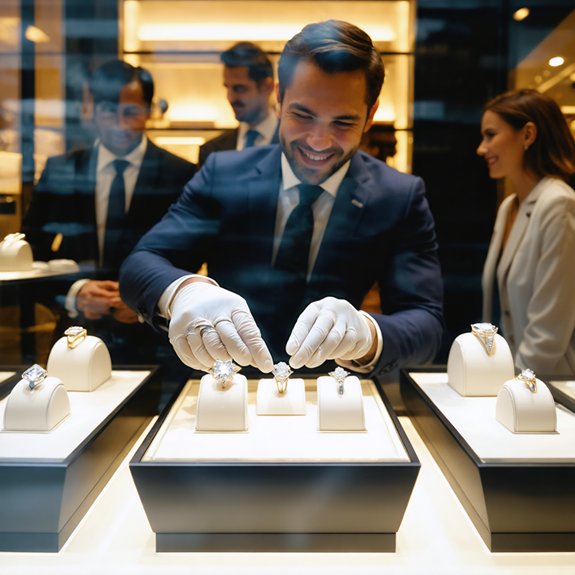
Major challenges confronting the U.S. retail jewelry industry stem from four vital areas: supply chain inefficiencies, global disruption impacts, synthetic diamond market dynamics, and shifting consumer preferences.
Traditional supply chain management remains a significant hurdle, with many businesses struggling to implement effective digital solutions for inventory tracking and process automation. Businesses are increasingly focusing on reliable vendor relationships to ensure priority access during supply shortages. With jewelry retailers declining by 2.8% in 2023, the pressure to optimize supply chains has intensified. Retailers are strengthening their supply chains through blockchain integration to enhance traceability and transparency.
This technology adoption gap particularly affects smaller retailers who lack sophisticated systems, making it difficult to compete in an increasingly digital marketplace.
Market disruptions, including global pandemics and geopolitical tensions, have highlighted the need for more resilient supply networks and increased safety stock, though these measures bring additional sustainability challenges and costs.
The rise of synthetic diamonds has created new competitive pressures, with retailers adjusting their pricing strategies as consumers increasingly choose lab-grown substitutes over natural diamonds, especially in bridal sales.
Consumer preferences continue to evolve, demanding greater transparency in sourcing and improved digital engagement.
Retailers face the complex task of balancing these expectations throughout managing inflationary pressures and adapting to a two-decade trend of declining jewelry sales, making strategic pricing decisions vital for survival.
Holiday Season Sales Impact
Recent holiday season performance data reveals encouraging trends for the U.S. retail jewelry sector, with overall sales growth reaching 4.8% year-over-year and jewelry-specific sales increasing by 4%. This positive momentum reflects strong consumer preferences and growing confidence in both online and traditional retail channels.
The holiday spending patterns demonstrate three key developments that shaped the market:
- Physical stores maintained dominance with 77% of total sales, showing a 4.1% increase.
- Online jewelry purchases grew by 6.7%, highlighting digital platform adoption.
- The clothing and accessories category, including jewelry, achieved 5% growth.
These results indicate a balanced approach to holiday shopping, with consumers adopting both in-store experiences and digital ease. Jewelry continues to be a preferred gifting option among shoppers during the festive season. Visa's seven-week monitoring period starting November 1, 2024, provided comprehensive insights into shopping trends.
The significant increase in online transactions, accounting for 23% of total holiday spending, suggests evolving consumer preferences toward multi-channel shopping experiences.
Enhanced security measures have significantly reduced fraudulent transactions during peak shopping days. This shift has prompted retailers to improve their digital presence during the maintenance of strong brick-and-mortar operations.
The robust performance across both channels positions the jewelry sector favorably for continued growth, as retailers adapt to meet diverse shopping preferences.
Customer Behavior Shifts

Shifting tides in consumer preferences are reshaping the U.S. retail jewelry environment, driven by four distinct trends: increased demand for personalization, sustainability concerns, digital shopping experiences, and generational influences.
Among the most notable personalization trends is the growing desire for unique, custom-designed pieces that tell personal stories. Modern jewelry shoppers are pursuing bespoke designs and personalized engravings, moving away from mass-produced items. This shift has led to a rise in custom jewelers who craft meaningful, one-of-a-kind pieces.
The sustainability focus continues to gain momentum, particularly among younger consumers who prioritize environmental responsibility. Lab-created diamonds and recycled precious metals are becoming increasingly popular substitutes to traditionally sourced materials. AI-driven algorithms are optimizing resource use and reducing waste in jewelry manufacturing processes.
At the same time, digital transformation is revolutionizing how people shop for jewelry, with AR technology enabling virtual try-ons and digital showrooms enhancing the online experience.
Generational preferences are likewise shaping the market, with Gen Z projected to represent nearly one-third of luxury purchases by 2030. This tech-savvy generation favors bold, avant-garde designs and shows a strong preference for digital shopping platforms, whereas mature shoppers remain a significant force in luxury spending.
Our Final Thoughts
The U.S. retail jewelry market shows promising indicators for 2025, supported by strong digital sales growth and evolving consumer preferences. Tiffany & Co.'s successful shift to omnichannel retail serves as a prime example of industry adaptation, with their digital sales increasing 44% in 2023. In spite of ongoing challenges with supply chain logistics and precious metal costs, the sector demonstrates resilience through creative marketing strategies, sustainable practices, and improved customer experiences across both physical and digital platforms.
